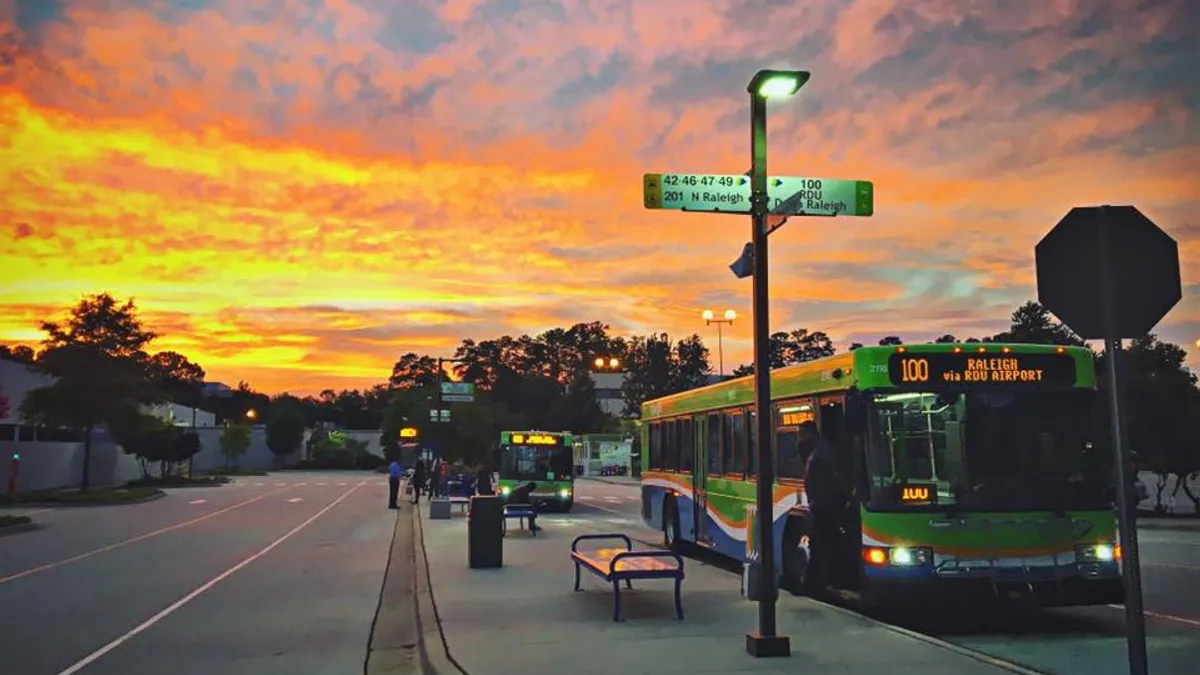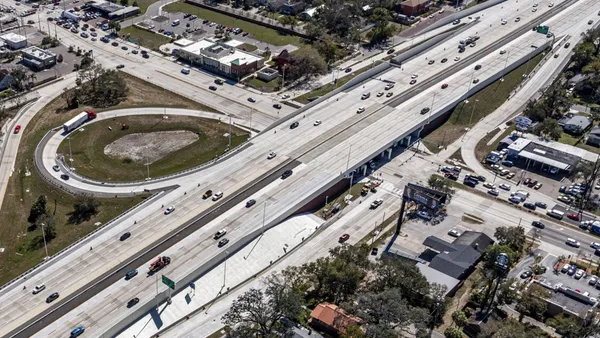UPDATE: May 23, 2018: The San Francisco Examiner has obtained documents, including emails and a joint check agreement for the purchase of materials, that seem to indicate the San Francisco Municipal Transportation Agency knew Tutor Perini and its subcontractor Con-Quest Contractors planned to use standard-strength steel on the project as far back as 2015.
Both contractors have denied responsibility, claiming that the contract specifies that high-strength steel is to be used only in “fixation track” and “special track work,” including track within certain turn radii, conditions that they said are not part of the project.
Con-Quest said it would cost $385,200 to replace the track near stations but to replace all the track as the agency has demanded would cost $2.6 million. Either option would further bloat the project's costs and add to $30 million of other contractors' claims.
Dive Brief:
- The San Francisco Municipal Transportation Agency (SFMTA) notified general contractor Tutor Perini last month that it and its subcontractor, Con-Quest Contractors, installed the wrong type of rail tracks on 3.2 miles of the $1.6 billion Central Subway project, according to the San Francisco Chronicle, and is demanding that the entities replace it with suitable material at their own expense.
- In an April 19 letter to Tutor Perini, SFMTA reportedly said that the contractors installed standard-strength steel rather than the high-strength, control-cooled or vacuum-treated carbon steel tee rail specified in the contract. SFMTA officials said the contractors' use of the standard-strength steel did not create a safety issue but would likely not last as long as the specified higher-strength steel, resulting in required maintenance sooner than expected.
- Previous construction delays have already pushed back the opening of the rail system one year to December 2019, but replacement of the track could add at least one more month to the schedule. SFMTA officials said the agency is working with Tutor Perini and Con-Quest to determine if any of the track in question can be used elsewhere.
Dive Insight:
There have been a few well-publicized, rail-related quandaries lately, of which the Central Subway project is the latest.
Late last month it was revealed that 1,750 defective concrete panels were used during station construction for the Metropolitan Washington Airports Authority's (MWAA) $5.8 billion DC Metro Silver Line extension. The wall panels are limited to the $2.7 billion second phase of the project. Supplier Universal Concrete Products reportedly had an equipment change without carrying out the correct calibration process, resulting in the production of panels that could allow water seepage.
Like the lower-strength steel allegedly used during construction of the Central Subway, the panels are not expected to cause any safety issues, but could potentially not meet their projected 100-year lifespan if not treated with a special coating every 10 years.
Another rail construction glitch was revealed last month in Miami. Apparently, the platforms at the $2 million Miami Intermodal Center (MIC), which was completed in 2013, are not compatible with the long-distance Amtrak trains it was supposed to serve. The platforms at the MIC are too short by 200 feet. The Florida Department of Transportation claims it didn't know about the problem until after construction started, but Amtrak officials said the issue was discussed during the preconstruction process. The most likely fix would be expensive and interfere with vehicular traffic next to the station, so any plans to do so are on hold.












